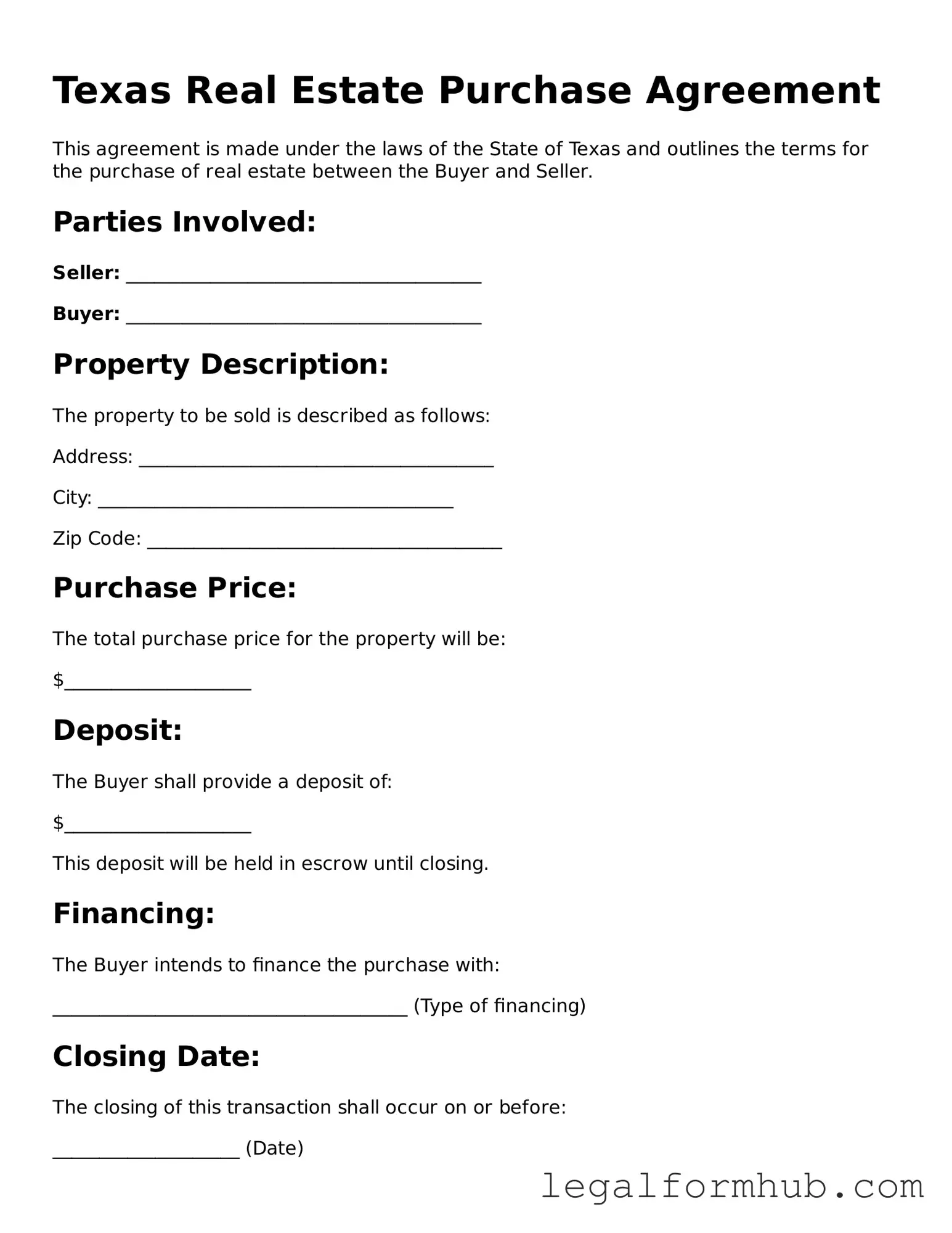The Texas Real Estate Purchase Agreement (REPA) is similar to the Residential Purchase Agreement used in many states. Both documents outline the terms of a property sale, including the purchase price, contingencies, and closing details. Each agreement serves to protect the interests of both the buyer and seller, ensuring that all essential elements of the transaction are clearly defined. While the language may vary by state, the fundamental purpose remains the same: to facilitate a smooth transfer of property ownership.
Another comparable document is the Commercial Purchase Agreement, which serves a similar function in commercial real estate transactions. This agreement includes specific terms related to business properties, such as zoning regulations and lease agreements. While the focus is on commercial interests, the structure mirrors that of the residential agreement, ensuring clarity and mutual understanding between parties involved in the sale.
The Offer to Purchase form is also akin to the Texas REPA. This document initiates the buying process, allowing potential buyers to present their terms to sellers. Like the REPA, it outlines the purchase price and conditions, but it is often less detailed. Once the offer is accepted, it typically evolves into a more comprehensive purchase agreement.
The Purchase and Sale Agreement (PSA) is another document that shares similarities with the Texas REPA. Commonly used in various states, the PSA outlines the terms of a real estate transaction and includes details about the property, financing, and contingencies. The PSA is often more flexible, accommodating different types of properties, whether residential or commercial, making it a versatile choice for many buyers and sellers.
Understanding your finances is essential, and having access to accurate documentation such as the ADP Check Stub can greatly assist in tracking your earnings and deductions for personal budgeting and tax reporting purposes.
The Lease Purchase Agreement also bears resemblance to the Texas REPA. This document allows a tenant to rent a property with the option to buy it later. Like the REPA, it specifies terms such as the purchase price and duration of the lease. This agreement provides a pathway for individuals who may not be ready to purchase outright but wish to secure a property for future ownership.
The Exclusive Right to Sell Agreement is another related document, particularly for real estate agents and brokers. This agreement grants a specific agent the exclusive right to sell a property. While it does not directly involve the buyer and seller like the REPA, it establishes the framework for how the sale will be conducted, ensuring that all parties are aligned in their goals.
The Counteroffer form is also similar in its role within the negotiation process. When a seller receives an offer that doesn’t meet their expectations, they may issue a counteroffer. This document modifies the original terms, such as price or contingencies, and initiates further negotiation. It serves as a bridge between the initial offer and the final purchase agreement.
The Addendum to Purchase Agreement is another important document that can complement the Texas REPA. This addendum allows for additional terms or conditions to be added after the initial agreement is drafted. It provides flexibility for both parties, enabling them to address specific issues that may arise during the transaction process without needing to rewrite the entire agreement.
Lastly, the Real Estate Option Agreement is similar in that it gives a buyer the right, but not the obligation, to purchase a property within a specified timeframe. This document outlines the terms under which the buyer can secure the property, similar to how the Texas REPA establishes a formal agreement for purchase. It provides an opportunity for buyers to evaluate the property further before committing to a full purchase.
